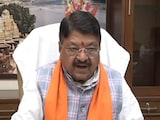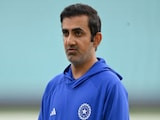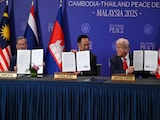From December 10, young teenagers in Australia will be banned, under new legislation, from social media platforms such as Facebook, Instagram and TikTok - one of the toughest online crackdowns in the democratic world.
The law, passed by parliament in 2024, aims to protect children from toxic elements of social media such as bullying, grooming and sexual extortion, as well as youth suicides linked to online abuse.
The plan - years in the making - has split opinion. It has raised privacy concerns among critics, who also warn the ban could be unenforceable. Those in favor say it's a necessary step to curb online harm. Governments around the world are watching closely to see how it unfolds.
What is Australia's under-16s social media ban?
The minimum age for users on most social media platforms in Australia is currently 13. Under the new legislation, children under the age of 16 will no longer be allowed to have their own social media accounts. Kids of all ages will still be able to scroll through content without logging into an account, if the platform offers that capability, but they won't be able to post, comment or message other users.
While the government hasn't published a full list of affected platforms, Facebook, Instagram, Snapchat, TikTok, X and YouTube are expected to be included in the ban. At this stage, messaging and online gaming services such as WhatsApp and Roblox are currently exempt, but the law has been designed to give the government flexibility to expand or narrow its scope over time.
Social media platforms must comply by preventing under-16s from creating accounts or evading the restrictions. They must also deactivate or remove existing underage accounts from Dec. 10. Companies that breach the law face fines of up to A$50 million ($32 million) for a single breach. Underage kids - and their parents - won't get penalized for breaking the rules.
Why is Australia's government introducing this ban?
Since 2021, following parliamentary probes into safety around social media and online content, there's been mounting community pressure on the government to act. Those inquiries included galvanizing testimony from victims of online abuse and parents of kids who have taken their own lives.
To some degree, the government has been cornered into taking action. Last year, newspaper publisher News Corp. mounted a campaign called "Let Them Be Kids," which called for under-16s to be barred from having social media accounts - an idea backed by the main opposition party. Within months, Prime Minister Anthony Albanese pushed the legislation through parliament, saying he wanted "children to have their childhood." Kids, he said, should be playing outside, trying different sports, discovering music and art, or splashing around in the pool.
Australia's eSafety Commissioner, Julie Inman Grant, says kids are no match for the power of social media. "The hope is that we can at least shield them from some of the more harmful and deceptive features," she said in an interview this year. "With the manipulative algorithms, the dark patterns and the rabbit holes, it's not really a fair fight."
There's also widespread unease about the impact of prolonged screen time on children and the addictive nature of social media feeds.
How will social media platforms verify users' ages?
Platforms are likely to deploy several layers of age checks. These measures broadly fall into three categories: age verification, age estimation and age inference.
Age verification involves providing some form of document as proof of age, though platforms aren't allowed to rely solely on government-issued identification. Age estimation uses biometric data - analyzing a user's face, voice or other physical traits that change as a person ages. Age inference examines online behavior such as word choice, browsing history or friendship networks to estimate a user's age.
Many of these measures, however, remain unreliable. Determining whether a person is over or under 16 based on their physiological characteristics alone is particularly challenging, according to technology companies.
How will the government enforce the rules?
Not even the government expects the ban to be watertight. After all, plenty of kids around the world manage to get their hands on alcohol or tobacco before they're legally allowed to buy it - and the Australian law reflects that reality. The legislation says social media operators must take "reasonable steps" to comply, which means companies likely won't be penalized if some underage children find ways to slip through.
Australia's online safety regulator says it's likely to require the platform operators to detail the number of account holders of various ages before and after Dec, 10. It may also ask the platforms what age-checking technologies it has used, and their accuracy.
The government is more concerned about systemic failures or flawed processes inside social media companies than keeping every underage child off the platforms. "Even if it's not perfect, it's too important not to try," Communications Minister Anika Wells has said.
In reality, social media companies will have significant discretion in how they comply. They've been given the power to determine an acceptable margin of error when estimating a user's age, based on the platform's user base.
What's been the response to the ban?
Australia's impending social media ban is divisive. Unsurprisingly, the major platforms oppose it. They objected to the way the legislation was rushed through parliament in late 2024, and they still argue that the ban represents a significant technological challenge. Many companies also say they are already committed to keeping children safe and that they have have had measures in place for years to do so. Some continue to implement new guardrails.
Unicef, the United Nations agency for children, has warned that the ban could push young people into riskier, unregulated places online. Some academics argue that one of the ban's flaws is that it doesn't rein in the production of harmful material, nor the algorithms that funnel such content to users. There's also criticism that barring young teenagers from social media removes a key means of emotional support and connection. Others say the law gives parents a false sense of security, reducing their incentive to educate children about the online dangers.
Privacy campaigners are worried that identification documents and biometric data used to determine a user's age could be compromised, monetized or exploited. In June, a trial commissioned by the government concluded that age checks "can be private, robust and effective" and there were no significant technological barriers to the legislation.
Among the wider public, there's significant support for the legislation. A YouGov survey conducted when the legislation passed found it was backed by 77% of Australians.
Do such bans exist elsewhere?
Australia's blanket ban is unique, and the government likes to describe its law as a world-first. While several US states have attempted to curb children's access to social media - with varying degrees of success - many of those measures make exemptions for kids who have parental consent.
Many countries are now considering raising the minimum age for social media users, or are already working toward passing similar legislation. New Zealand in May followed Australia and proposed a social media ban for under-16s, and Denmark has laid out plans to bar under-15s from social media. "We have unleashed a monster," Danish Prime Minister Mette Frederiksen told the country's parliament on Oct. 7, referring to social media.
What's at stake?
Australia's new law could be the start of a significant cultural shift for a generation of young kids and teenagers for whom social media has long been central to their identity, self-expression and sense of belonging. For others, the social media ban might mean a reprieve from the pain and suffering that digital platforms can also deliver.
For tech giants such as Meta, YouTube, Snapchat and TikTok, the financial impact could be substantial. According to the eSafety Commissioner, about 95% of 10- to 15-year-olds in Australia have at least one social media account. That means platform operators will no longer be able to monetize roughly 2.5 million underage users.
The bigger threat to corporations comes from a possible wave of similar crackdowns in other countries. If social media bans for young teenagers become widespread, tech companies behind the social media platforms would lose a key group of users important for ongoing engagement, and one advertisers wouldn't want to give up because they will increasingly purchase products and services in the future.
"The truth is that our legislation is where the world is going," Prime Minister Albanese said at the United Nations in September. It's already clear that some governments see Australia's experiment as a test case. "I have been inspired by Australia's example," European Commission President Ursula von der Leyen has said. "We in Europe are watching and will be learning from you." Singapore is also studying age limits for social media and has discussed the issue with Australia.
(Except for the headline, this story has not been edited by NDTV staff and is published from a syndicated feed.)















